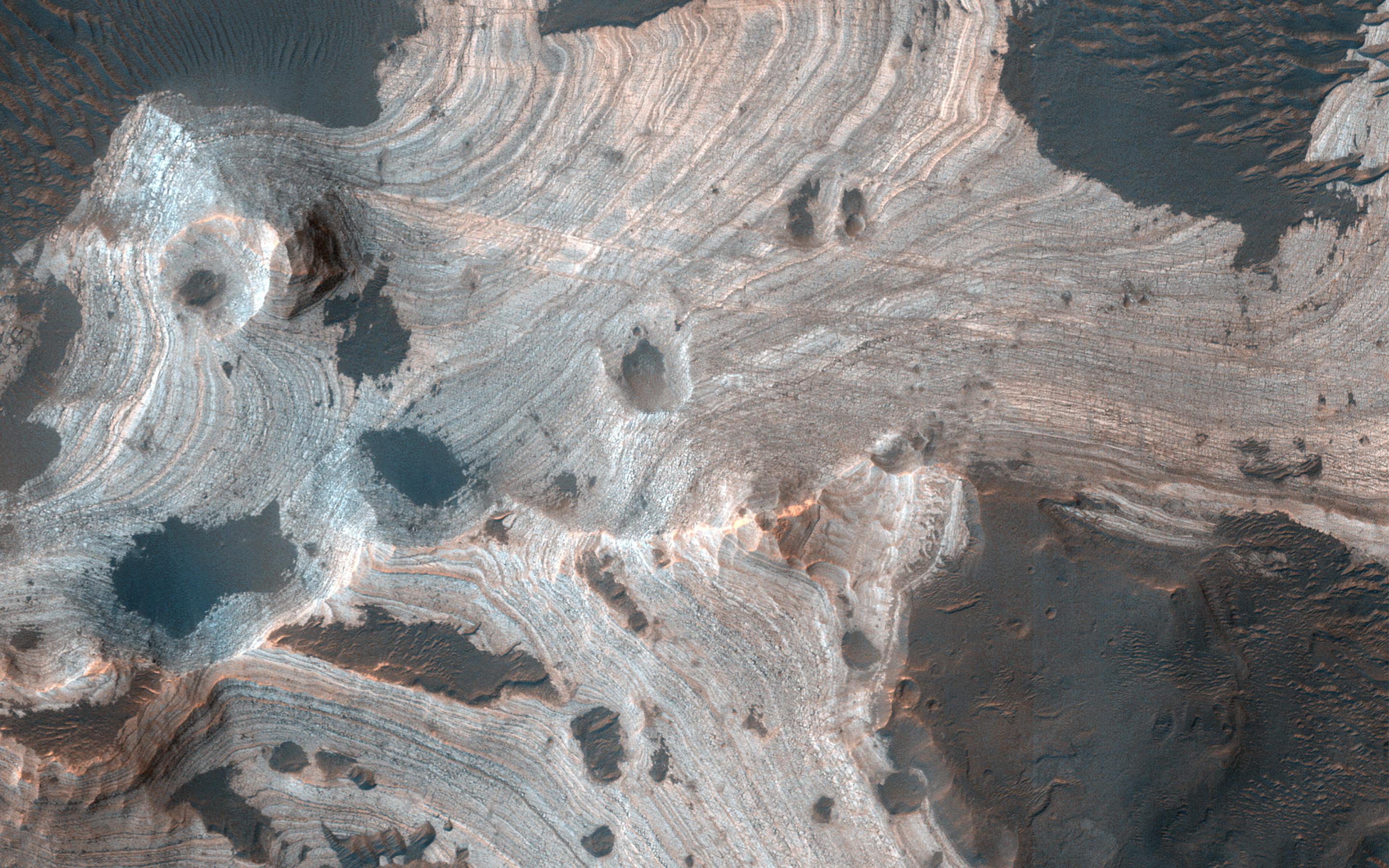Mars rock layers swirl in gorgeous crater photo

A sliver of Martian geological history takes center stage in a striking photo of a Red Planet crater.
The image, captured by the High Resolution Imaging Science Experiment (HiRISE) camera aboard NASA's Mars Reconnaissance Orbiter (MRO), shows dramatically swirling layers of rock in the 87-mile-wide (140 kilometers) Holden Crater.
"Much of Mars is covered by sand and dust, but in some places stacks of sedimentary layers are visible," NASA officials wrote Monday (June 8) in a description of the photo.
"In this image, exquisite layering is revealed emerging from the sand in southern Holden Crater," they added. "Sequences like these offer a window into Mars' complicated geologic history."
That history includes a stretch long ago when the planet's surface was likely capable of supporting Earth-like life. As work by robotic explorers such as MRO and NASA's Curiosity rover has shown, ancient Mars sported rivers, lakes and, some scientists believe, a huge ocean that covered most of the planet's northern hemisphere.
Everything changed about 4 billion years ago, when Mars lost its global magnetic field. The planet's once-thick atmosphere was then exposed to stripping by the charged particles of the solar wind, and Mars was transformed into the cold, dry world we know today.
Holden Crater was once a potential landing site for Curiosity, by the way. But NASA ultimately selected the 96-mile-wide (154 km) Gale Crater for the six-wheeled robot's rovings.
Breaking space news, the latest updates on rocket launches, skywatching events and more!
Holden Crater lies about 26 degrees south of the Martian equator, whereas Gale Crater is at just 5 degrees south.
- Latest photos from NASA's Mars Reconnaissance Orbiter
- Photos: Ancient Mars lake could have supported life
- Bam! Fresh crater spied on Mars — and it looks spectacular
Mike Wall is the author of "Out There" (Grand Central Publishing, 2018; illustrated by Karl Tate), a book about the search for alien life. Follow him on Twitter @michaeldwall. Follow us on Twitter @Spacedotcom or Facebook.
OFFER: Save 45% on 'All About Space' 'How it Works' and 'All About History'!
For a limited time, you can take out a digital subscription to any of our best-selling science magazines for just $2.38 per month, or 45% off the standard price for the first three months.

Michael Wall is a Senior Space Writer with Space.com and joined the team in 2010. He primarily covers exoplanets, spaceflight and military space, but has been known to dabble in the space art beat. His book about the search for alien life, "Out There," was published on Nov. 13, 2018. Before becoming a science writer, Michael worked as a herpetologist and wildlife biologist. He has a Ph.D. in evolutionary biology from the University of Sydney, Australia, a bachelor's degree from the University of Arizona, and a graduate certificate in science writing from the University of California, Santa Cruz. To find out what his latest project is, you can follow Michael on Twitter.

